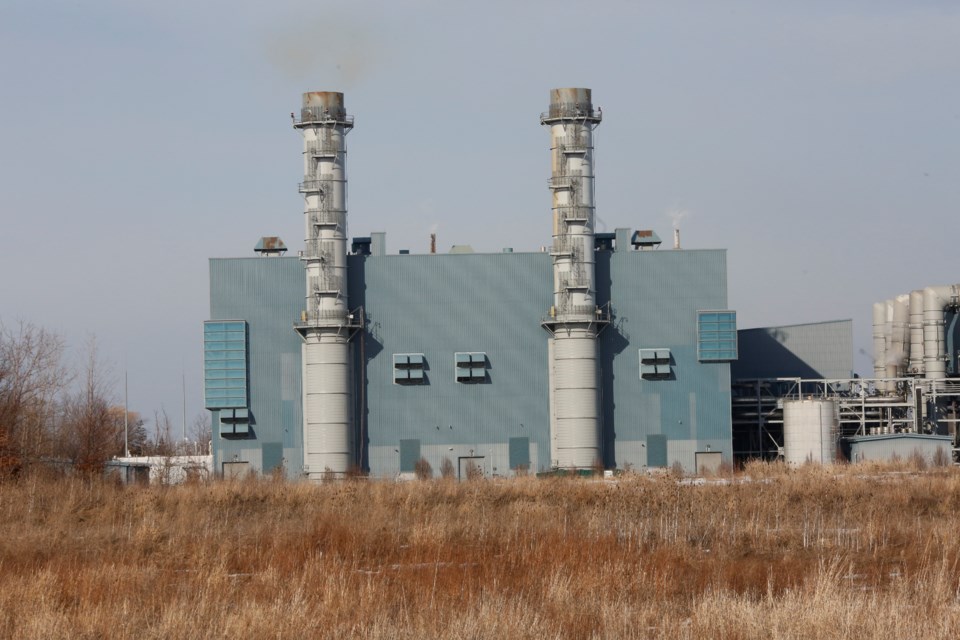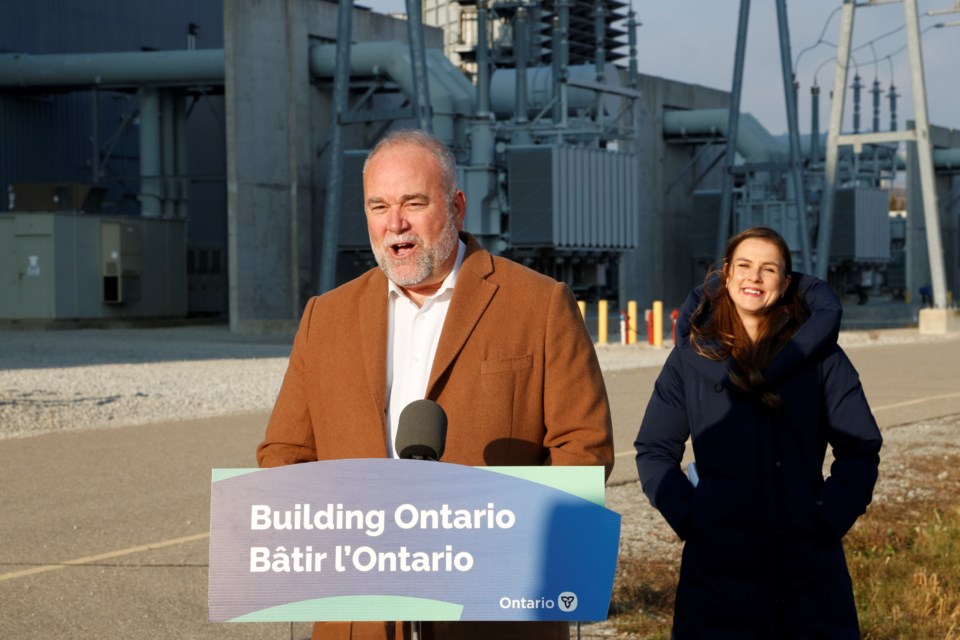The Province of Ontario is dishing out $4.1 million for Atura Power’s plans to produce electricity by blending hydrogen with natural gas.
The announcement came Thursday morning (Nov. 23) at Atura’s Halton Hills Generation Station, located at Steeles Avenue and Sixth Line.
Minister of Energy Todd Smith told the gathered crowd the funding from the Province's Hydrogen Innovation Fund is for advancing “the largest electricity grid-connected hydrogen blending project in Canada's history.”
“That means lower [greenhouse gas] emissions when this facility turns on to meet peak demands,” Smith added. “Last year, Ontario welcomed 500,000, a half-million, newcomers to the province… And with all that growth comes new energy demands.”
Chuck Farmer, VP of Planning for the Independent Electricity System Operator (IESO), said “we are forecasting that Ontario's electricity demand will grow by at least 40 per cent over the next 20 years."
Minister of the Environment Andrea Khanjin echoed her colleague’s remarks, but also touted the economic benefits of hydrogen as an energy source.
“The hydrogen economy could create up to 100,000 jobs across the province while also reducing greenhouse gas emissions by 50 megatons per year,” she said.

Atura's plans are one of nine projects across the province receiving money from the Hydrogen Innovation Fund at this time, with a total of $5.9 million being allocated.
The local company anticipates its blending infrastructure will begin construction sometime next year in Halton Hills. Atura plans to truck the hydrogen in from its nascent Niagara Hydrogen Centre, where it will be extracted from water using electrolysis. The blended gaseous mix will run Atura’s two massive turbines.
Though the announcement was marked by forward-looking optimism, a few questions hung in the air about the limits of blending as a power generation method. Atura plans to cap the hydrogen mix to 15 per cent by volume.
Hydrogen is eight times less dense than natural gas. According to experts, the upper-end limit of blending the two gases is 20 per cent before drop-offs in electrical output occur.
California-based think tank Energy Innovation: Policy and Technology said in a report that “a 20 per cent hydrogen blend would provide only six to seven per cent of the mixture’s energy content.”
In addition, the report further claims that the greenhouse gas emission reductions would be marginal.
“Gas utilities can achieve a mere six to seven per cent reduction in GHG emissions under the most optimal blending conditions,” reads the report.
When asked about the limits of hydrogen blending by HaltonHillsToday, Minister Smith said the funding was about “testing to see where we can go to remove emissions from our electricity grid.”
“It's all part of Andrea's [Khanjin] plan at the Ministry of the Environment, my plan at the Ministry of Energy, to make sure that we have as clean a grid as we can possibly have today.”
The provincial funding comes at a time when Atura is facing opposition from the community and environmentalists about its proposed expansion, which is a separate process.
